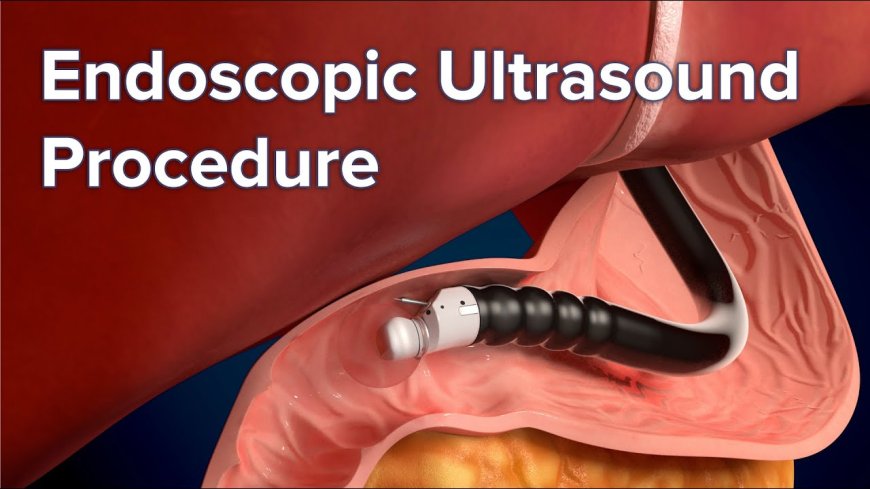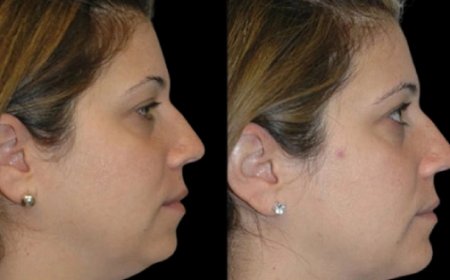Endoscopic Examination Services: Early Detection for Better Health Outcomes
One of the most potent weapons in modern medical practice is early diagnosis.

One of the most potent weapons in modern medical practice is early diagnosis. Its regime guarantees timely treatment, prevents the progression of disorders, and often saves lives. The endoscopy, being minimally invasive, permits direct visualization and is one of the common methods used in early diagnosis. In recent years, the provision of endoscopic examinations has become the basis of preventive medicine.
This article is an attempt to describe what an endoscopy means, delineate its different types, what they detect, and how the findings of these examinations affect long-term health outcomes.
What Is Endoscopy?
Endoscopy defines that medical procedure including the thin long flexible endoscope bearing light and camera at the tip to see the internal organs and structures inside the body. This procedure is different from open surgery in that the endoscopic procedure can be performed through natural orifices such as that of the mouth or the rectum, or through small incisions when required.
The physicians can use this technique to view the interior of the body simultaneously with the outer activities, take tissue samples (biopsies), and sometimes even treat issues immediately.
Types of Endoscopic Examination
There are several endoscopic examinations that correspond to different areas of local anatomy. The common ones are:
1. Gastroscopy or Upper Endoscopy
The investigation is conducted to examine the esophagus, stomach, and part of the small intestine. It is commonly done to find:
-
Ulcers
-
Gastritis
-
Tumors
-
Gastroesophageal reflux disease (GERD)
2. Colonoscopy
Used to visualize the colon and rectum. It helps detect:
-
Colon polyps
-
Colorectal cancer
-
Inflammatory bowel disease (IBD)
-
Causes of gastrointestinal bleeding
3. Bronchoscopy
To access the airways and lungs; assist in:
-
Lung infections
-
Tumors or blockages
-
Causes of chronic cough
-
Foreign bodies in the airway
4. Cystoscopy
Used to check up on the bladder and urethra; helps diagnose:
-
Urinary tract infection
-
Blood in urine
-
Bladder cancer
-
Incontinence
5. Laparoscopy
Surgical endoscopic inspection of the abdominal or pelvic cavity through small incisions. The most frequent applications are in gynecology and investigation of unexplained pain.
Why Endoscopic Exams Are Vital for Early Detection
One of the most brilliant aspects of endoscopy is the detection of diseases at an early stage or even before symptoms come into being. Here is how endoscopic services lead to good health outcomes:
1. Early Diagnosis of Serious Conditions
For example, stomach cancer, colon cancer, ulcers, and chronic inflammation can seep in undetected. Early detection of abnormal tissues, polyps, or bleeding can be achieved by endoscopic scanning so that treatment can already start at once with a greater percentage of survival.
2. Real-Time Visual Confirmation
An endoscopic procedure actually prima facie provides access to the visual details of an internal structure. A physician can look at tissue color, texture, and movement in real time, making diagnoses more accurate.
3. Biopsy and Treatment Together
When termed something suspicious during an endoscopy, a doctor can biopsy or simply eliminate the growth. Fewer follow-up appointments streamline the treatment.
4. Minimally Invasive and Quick Recovery
Endoscopic techniques are done mostly under local anesthetics or sedation with minimal recovery. Within a day, most patients are back to their usual activities, rendering it an option convenient for both diagnosis and treatment.
When might you consider endoscopy?
Symptoms or patient complaints may warrant an endoscopic examination. These include:
-
Persistent abdominal pain
-
Unexplained weight loss
-
Frequent heartburn or acid reflux
-
Blood in stool or vomit
-
Difficulty in swallowing
-
Cough or hoarseness persisting for weeks
-
Change in bowel habits
Thus, endoscopies are not just for those with symptoms. They are done for cancer screening purposes in individuals at risk, especially if they are above 45 or have first-degree relatives with gastrointestinal symptoms.
Preparation for Endoscopy
Preparation depends on the sort of endoscopy you are scheduled to undergo. Here are some broad steps that you can expect:
-
Fasting: Probably, you will be asked not to take anything by mouth for 612 hours.
-
Bowel Cleansing: Mostly laxatives are administered or a special diet is to be followed, all aimed at bowel clearing.
-
-
Medication Review: Let your doctor know the medicines you might happen to be taking, especially blood thinners or drugs for diabetes, or any known allergies.
-
Transportation: For obvious reasons, you'll have to have someone with you during sedation to accompany you back home.
Follow the exact directions of the healthcare provider.
Post-Procedure and Follow Up
Depending on the procedure, you could feel somewhat drowsy or bloated after your endoscopic examination. You may feel mild discomfort or even slight pain such as a sore throat or gas, all of which should disappear after a couple of hours.
Biopsy results usually arrive within a couple of days. Your healthcare provider will inform you of the results and find out if there is anything that requires further action in case abnormalities are found.
Conclusion
With safety, precision, and power, endoscopy is one of the modern-day diagnostic tools used in early diagnosis and prevention of disease. Endoscopic examination services assure timely medical attention with a minimum invasion to the patient and can solve the problem on the spot.
Don't let unexplained symptoms be a menace to your health while a routine screening has been due for some time. Speak to your healthcare provider about endoscopy and how it can help sustain long-term good health.























